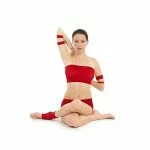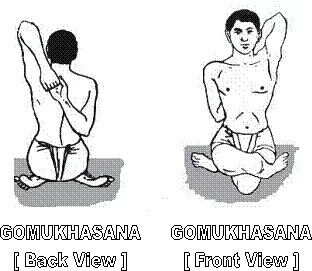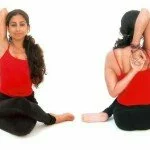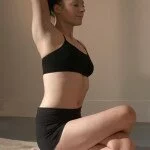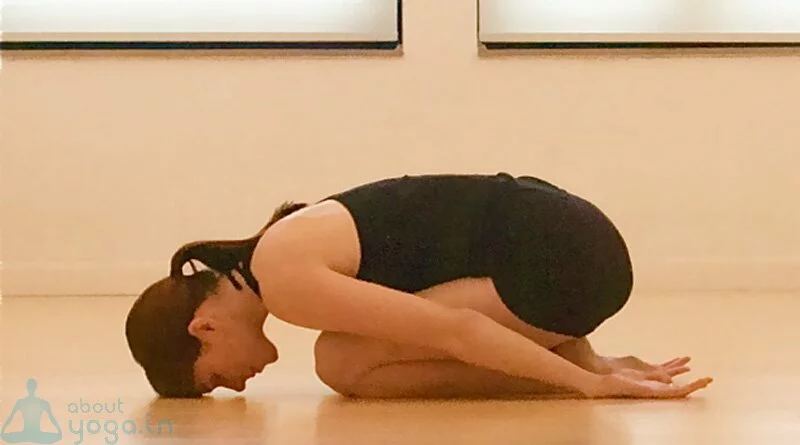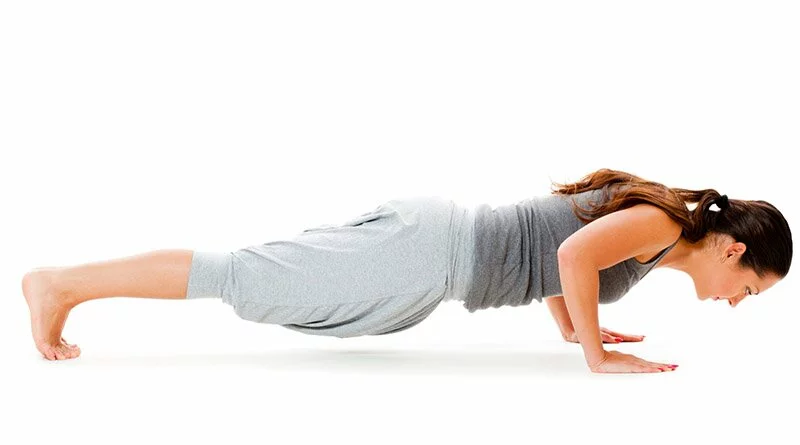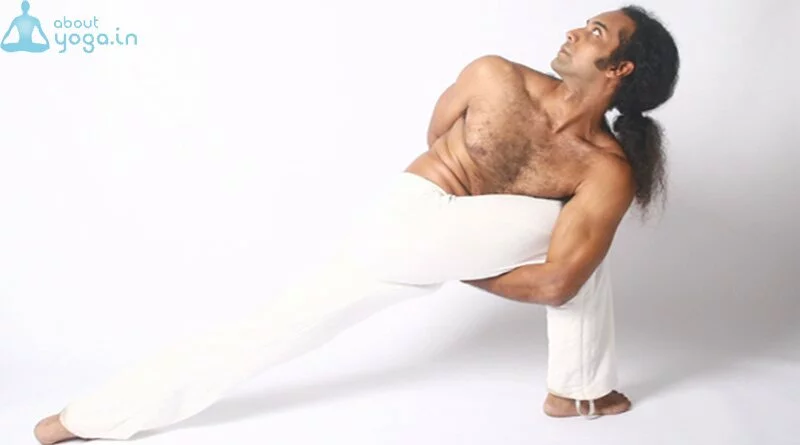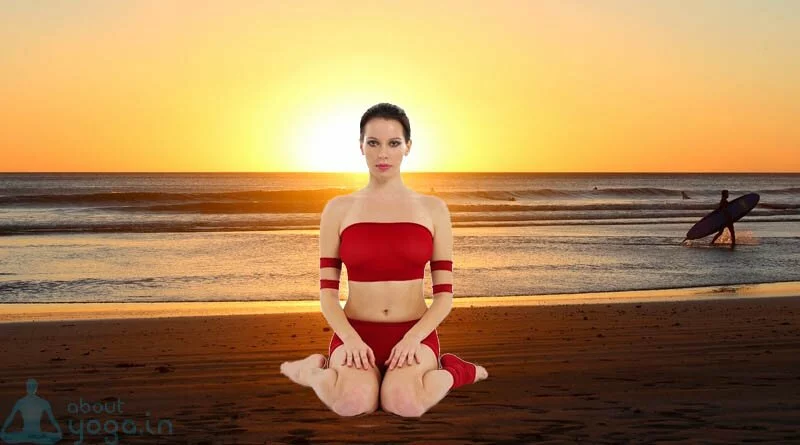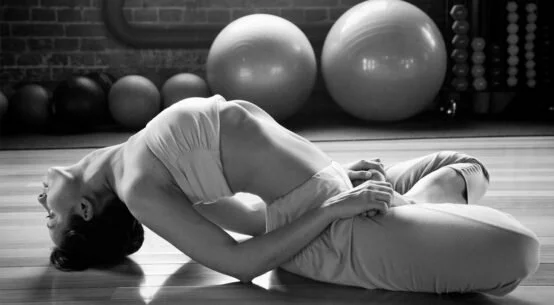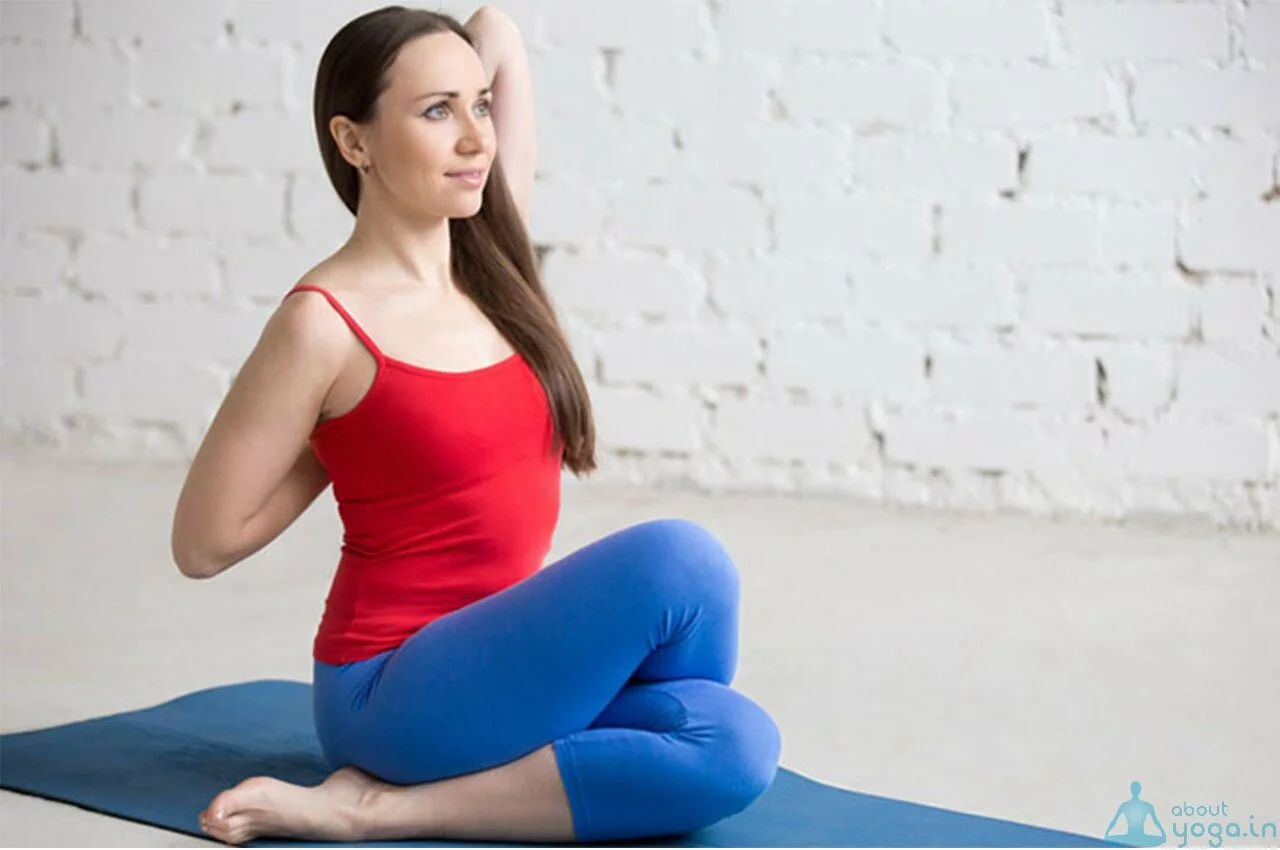
Gomukhasana (goh-moo-kha-sah-nah; Sanskrit: गोमुखासन; IAST: Gomukhāsana) or Cow Face Pose is an asana.
The name comes from the Sanskrit words Go (गो, Go) meaning “cow”, Mukha (मुख, mukha) meaning “head” or “mouth”, and Asana (आसन, Āsana) meaning “posture” or
“seat”.
The word Go also means “light”, so gomukh may refer to the light in or of the head, or lightness of the head. The asana gets its name because the thighs and
calves of the person performing it resemble a cow’s face, wide at one end and tapering toward the other.
Step by Step:-
- Sit in Dandasana (Staff Pose), then bend your knees and put your feet on the floor. Slide your left foot under the right knee to the outside of the right hip. Then cross your right leg over the left, stacking the right knee on top of the left, and bring the right foot to the outside of the left hip. Try to bring the heels equidistant from the hips: with the right leg on top you’ll have to tug the right heel in closer to the left hip. Sit evenly on the sitting bones.
- Inhale and stretch your right arm straight out to the right, parallel to the floor. Rotate your arm inwardly; the thumb will turn first toward the floor, then point toward the wall behind you, with the palm facing the ceiling. This movement will roll your right shoulder slightly up and forward, and round your upper back. With a full exhalation, sweep the arm behind your torso and tuck the forearm in the hollow of your lower back, parallel to your waist, with the right elbow against the right side of your torso. Roll the shoulder back and down, then work the forearm up your back until it is parallel to your spine. The back of your hand will be between your shoulder blades. See that your right elbow doesn’t slip away from the right side of your torso.
- Now inhale and stretch your left arm straight forward, pointing toward the opposite wall, parallel to the floor. Turn the palm up and, with another inhalation, stretch the arm straight up toward the ceiling, palm turned back. Lift actively through your left arm, then with an exhalation, bend the elbow and reach down for the right hand. If possible, hook the right and left fingers.
- Lift the left elbow toward the ceiling and, from the back armpit, descend the right elbow toward the floor. Firm your shoulder blades against your back ribs and lift your chest. Try to keep the left arm right beside the left side of your head.
- Stay in this pose about 1 minute. Release the arms, uncross the legs, and repeat with the arms and legs reversed for the same length of time. Remember that whichever leg is on top, the same-side arm is lower.
Anatomical Focus:-
- Ankles
- Hips
- Thighs
- Shoulders
- Chest
Benefits:-
Stretches the ankles, hips and thighs, shoulders, armpits and triceps, and chest
Contraindications and Cautions:-
Serious neck or shoulder problems
Beginner’s Tip:-
Beginners often have a difficult time getting both sitting bones to rest evenly on the floor, which can make it difficult for the knees to stack on top of each other evenly. When the pelvis is tilted, the spine can’t properly extend. Use a folded blanket or bolster to lift the sitting bones off the floor and support them evenly.
Variations:-
From the full pose, lean forward and lay the front torso down on the inner top thigh. Stay for 20 seconds, then inhale and come up.
Preparatory Poses:-
- Baddha Konasana
- Supta Virasana
- Supta Baddha Konasana
- Supta Padangusthasana
- Upavistha Konasana
- Virasana
Follow-Up Poses:-
- Ardha Matsyendrasana
- Bharadvajasana
- Garudasana
- Marichyasana III
- Padmasana
- Paschimottanasana
- Upavistha Konasana
Deepen The Pose:-
You can increase the stretch in this pose if you’re a little more flexible in the shoulders and armpits by moving your hands away from the back of your torso.

